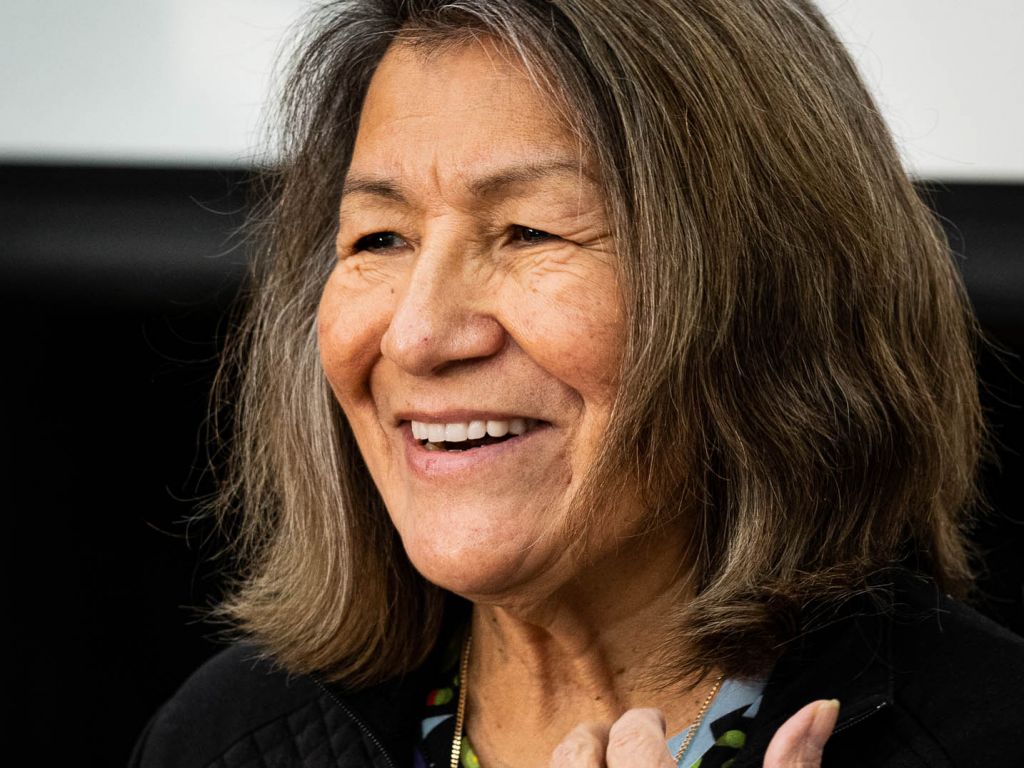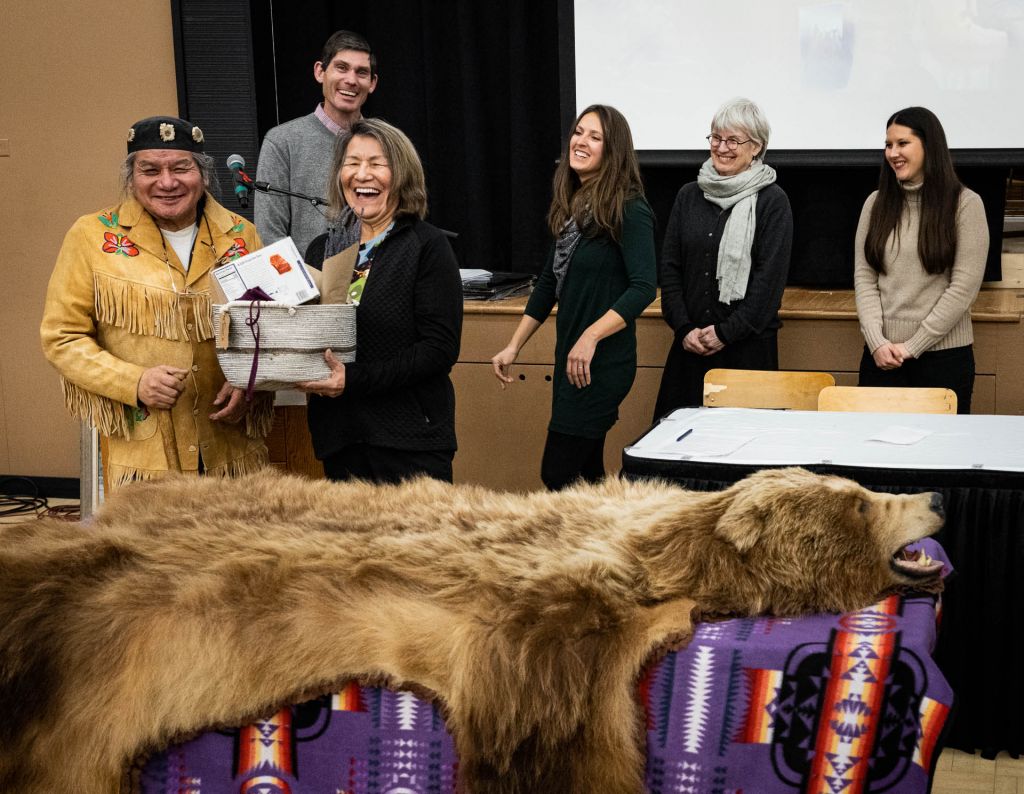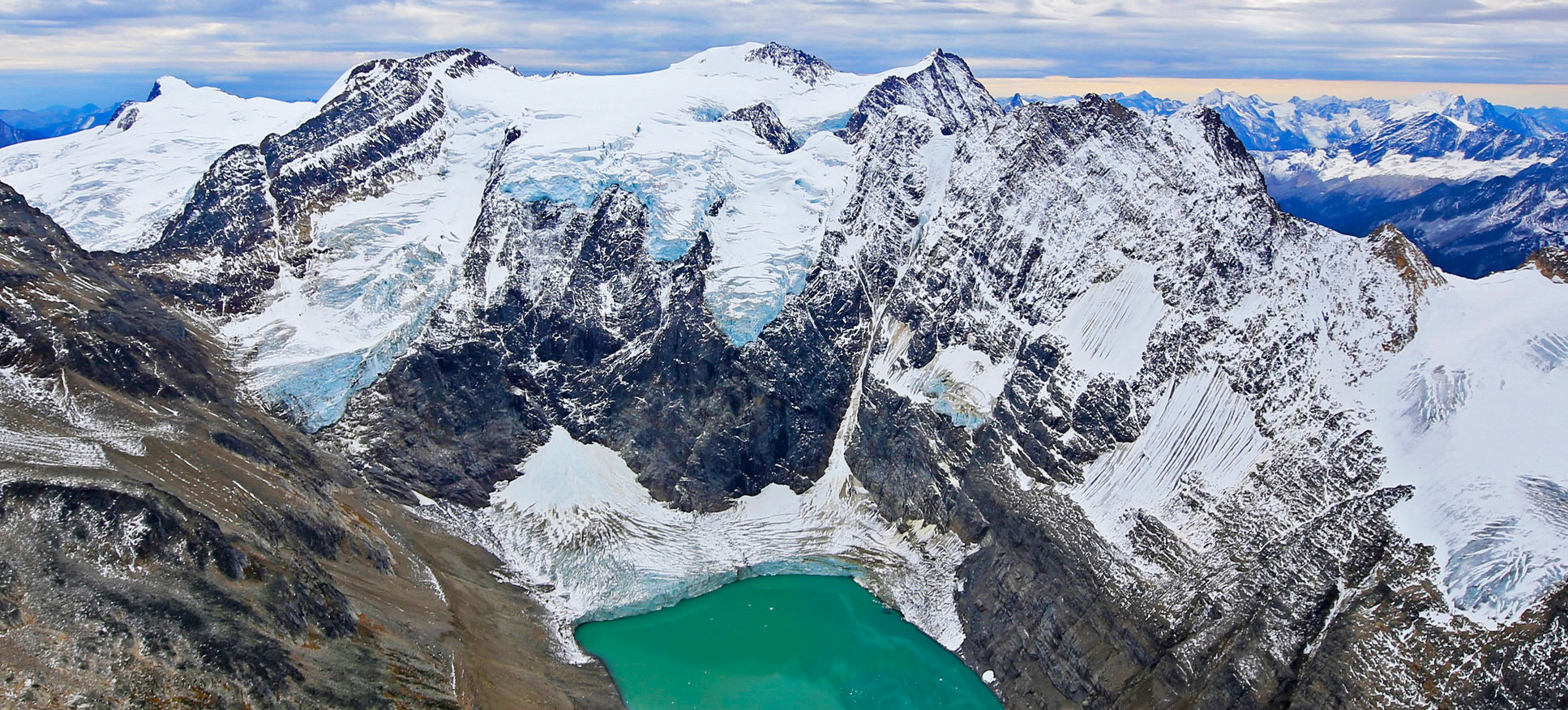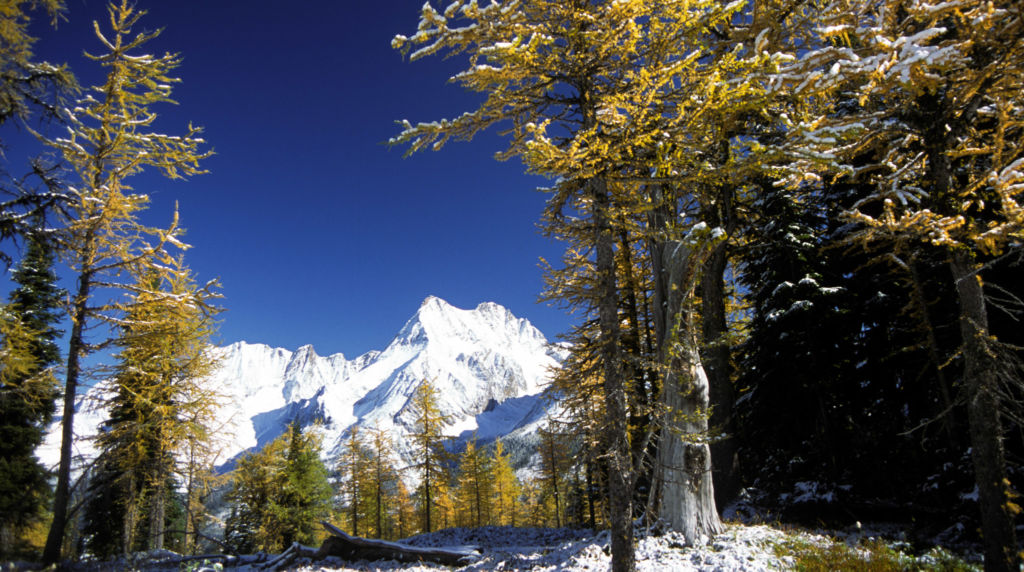Treading lightly in Qat’muk: An interview with Kathryn Teneese
“We are creating a legacy for our collective future”Kathryn Teneese, Ktunaxa Nation Council chair
Long before the threat of development covered a swath of wilderness in the Purcells with a dark cloud and led to years of rallies, protests, and court cases, the Ktunaxa people were here in the Kootenays. Before settlers moved in, the Ktunaxa people were here. For thousands of years, the Ktunaxa have lived in the Kootenays and known Qat’muk, the land of the Grizzly Bear Spirit, as a sacred place.
Kathryn Teneese is the Chair of the Ktunaxa Nation Council. She sat down with Wildsight this week to talk about what the future holds for the Qat’muk area, which includes the Jumbo Valley and hundreds of square kilometres of rich valley bottoms, towering peaks, rushing rivers, ancient glaciers, and abundant wildlife.
More than 150 people gathered with the Ktunaxa Nation last Saturday to celebrate and honour the return of Qat’muk to the Ktunaxa people, and the creation of an Indigenous Protected and Conserved Area (IPCA). The atmosphere was joyous as speaker after speaker acknowledged the hard work that went into this victory and the importance of the agreement between the Ktunaxa and the federal and provincial governments to create this IPCA. Many felt relieved that years of fighting against a proposed year-round ski resort in the Jumbo Valley was finally over.

Kathryn Teneese (Ktunaxa Nation Council) speaks during a ceremony honouring the Qat’muk Indigenous Protected and Conserved Area. Photo by Pat Morrow
“We have an opportunity in the region to work together, to work on something that’s really positive, and it’s going to be led by the Ktunaxa people,” shared Kathryn. “Finally we can quit looking at things negatively. Now we have something positive to work towards … For me, it took the weight of the world off our shoulders.”
Kathryn sees this progress in light of reconciliation.
“We talked about this being an act of reconciliation. It only will be if everybody chooses to think about things in a different way,” Kathryn said. “My hope out of this whole thing is that we will emerge with a relationship that acknowledges who the Ktunaxa are, what our connection to our homeland is, and our ability to express our path forward in a way that is reflective of a positive and, dare I say, reconciled approach.”
So what will the Qat’muk IPCA look like?
“Boundaries are not yet defined, but we do know that they will be designed to protect diversity and Indigenous cultural value and use, and that the area will join the northern boundary of the Purcell Wilderness Conservancy. It will include all of Jumbo Valley and parts of the adjoining watersheds,” Kathryn said. “Qat’muk, and the Jumbo Valley, will remain wild.”
The beauty of the IPCA, Kathryn shared, is there is no ‘one-size-fits-all’ approach.
“We’re going to be able to work towards something that makes sense for our area, between ourselves as Ktunaxa and our neighbours.”
“I would hope we would continue to provide access to folks that want to experience the place, and obviously have a commitment to ensure the human footprint is as small and as light as it possibly can be,” said Kathryn. “We want to ensure that it’s accessible and available, and that it doesn’t become yet another place that has permanent development on it.”
The Ktunaxa’s worldview places value on all living things, not just human’s use of the land. Kathryn said we need to start thinking differently about how we manage land.
“As Ktunaxa, we talk about the fact that all of the activity that takes place, the only thing that we as the human race has any ability to control is our own. We talk about things like wildlife management – we don’t manage the wildlife, we manage our impact on what it is that negatively affects wildlife, doing what they do instinctively,” she said. “We have to start shifting that thinking, to realize we’re just another living thing. When we talk about ?a-kxam̓is q̓api qapsin, which means all living things, we’re one of those living things … There is validity in being able to recognize that everything was not put on this earth for human beings.”
And the Ktunaxa people strive to work based on the knowledge of past generations, finding wisdom from their ancestors.
“We are resilient, and that resilience is going to express itself in what the IPCA finally looks like,” she asserted.
At the celebration January 18th, Kathryn and Akisqnuk Chief Alfred Joseph acknowledged funders, individuals, and environmental groups such as the Jumbo Creek Conservation Society and Wildsight, to thank them for their help in reaching this historic moment. While many have written on the pages of the Jumbo Valley’s past, Kathryn made clear the Ktunaxa will author the next chapters.
“Please pay attention to how we are moving forward and, if we ask, we would hope you would step up. But we’re in the driver’s seat,” Kathryn said. “We’re holding the pen, we’re turning the page and we’re going to write our story.”
Long after the governments of today are gone, long after the people who first picked up the rallying cry of ‘Jumbo Wild’ are gone, and long after our children and our children’s children have come and gone, this precious, treasured place will remain wild, under the careful stewardship of the Ktunaxa Nation.
We celebrate alongside Kathryn and the Ktunaxa people that Qat’muk will be protected, and that Jumbo will stay wild forever.

Kathryn Teneese and Akisqnuk Chief Alfred Joseph accept a gift basket from a consortium of foundations that gave funding for the creation of the Qat’muk IPCA. Photo by Pat Morrow
Header photo by Douglas Noblet


